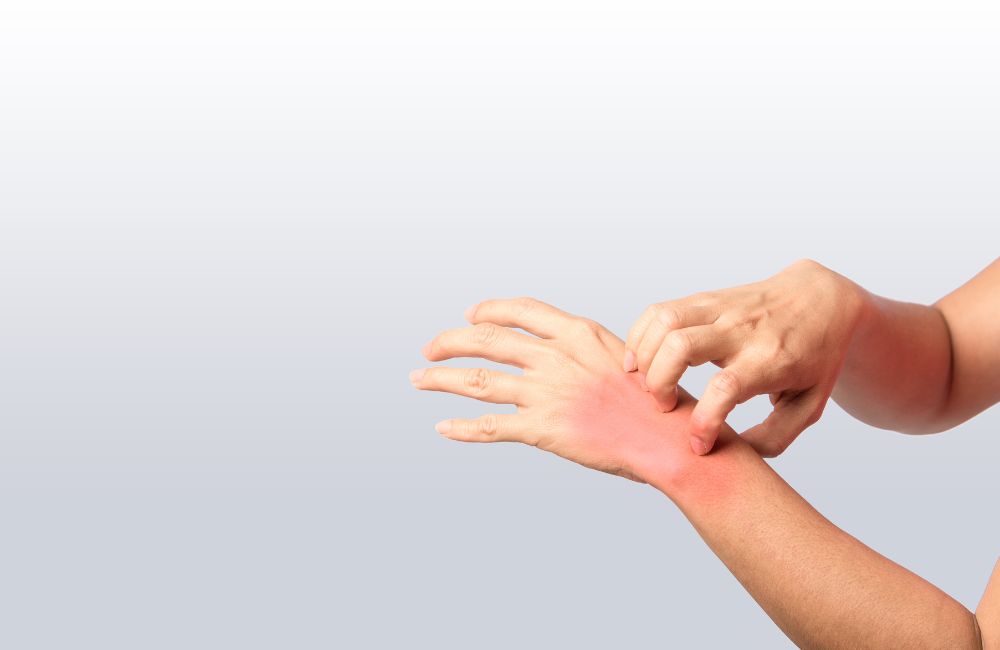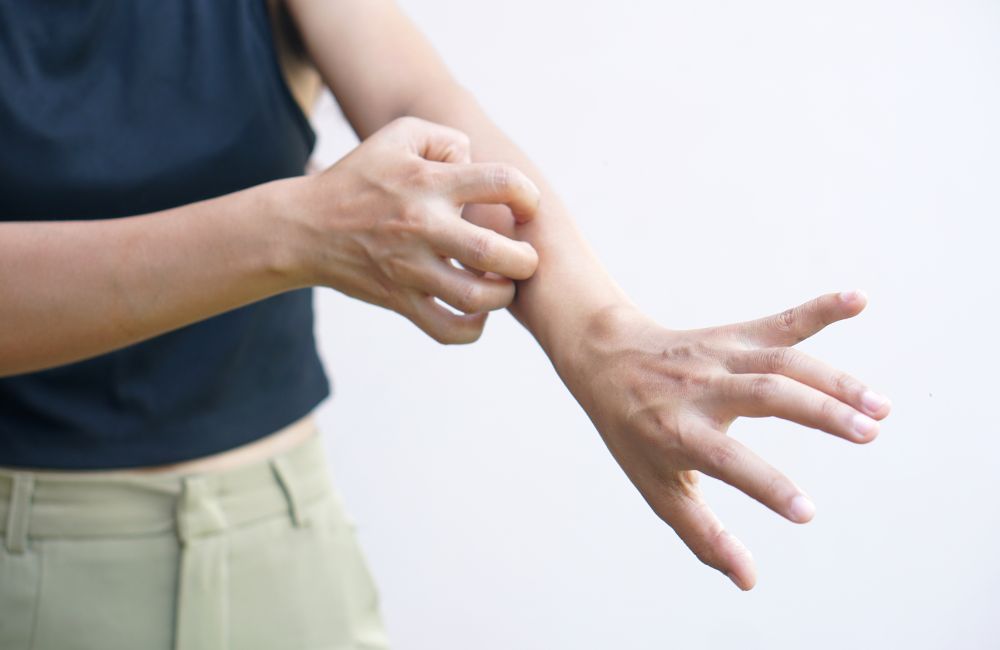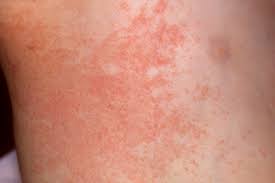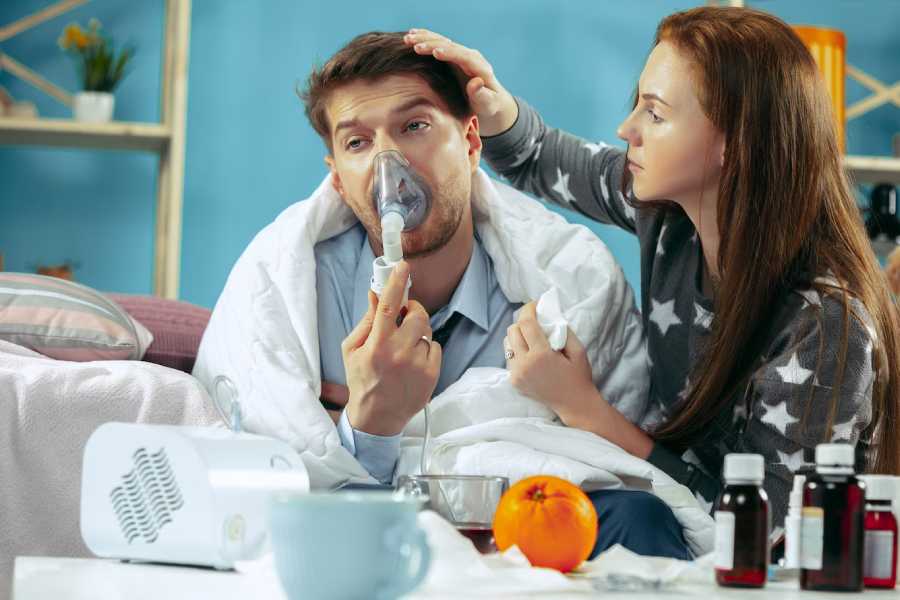
Heat rashes, or prickly heat or miliaria, are common skin conditions when sweat becomes trapped in the sweat ducts beneath the skin. Heat rashes are particularly prevalent in hot, humid environments and can affect people of all ages, especially those who are active or wearing tight clothing. Addressing heat rashes promptly is crucial to avoid complications such as infections. If you’re unsure where to start, we’ll explore effective home remedies for heat rashes and highlight when it is essential to seek help from urgent care in Southington, CT.

Heat rashes occur when sweat ducts become blocked and trap perspiration under the skin. This leads to inflammation and the formation of small, itchy bumps. They are most commonly found in areas where sweat tends to accumulate, such as the neck, back, chest, and skin folds. Heat rashes can range from mild to severe, depending on the extent of the blockage and the body’s reaction to it.
Several factors can contribute to this condition, including:
Heat rashes can manifest in different forms, each with its unique characteristics:
Finding relief from heat rashes can be straightforward with the right home remedies. Here are ten effective methods to soothe and heal your skin.
A cold compress can work wonders for heat rashes. The cooling effect helps to alleviate the burning and itching sensations, providing immediate relief. This method is particularly effective because it reduces the temperature of the skin, which in turn decreases the inflammation and discomfort associated with heat rashes. Here’s how to do it:
Aloe vera is a powerhouse of skin benefits. Its natural properties help in soothing the skin, reducing redness, and providing a cooling effect. The gel forms a protective layer over the skin, which helps retain moisture and accelerates healing. Additionally, its antimicrobial properties help prevent any secondary infections that might arise from scratching the rash. Here’s how to do it:
Calamine lotion is a popular remedy for various skin irritations, including heat rashes. It has been a go-to remedy for many skin issues due to its soothing and protective properties, as advised by urgent care in Southington, CT. It contains zinc oxide and ferric oxide, which help to cool the skin and reduce itching. Applying calamine lotion not only provides immediate relief but also helps in drying out the rash, thus promoting faster healing. Here’s how to do it:
A baking soda bath can help soothe the skin and reduce the symptoms of heat rashes. It is an excellent remedy for heat rashes due to its anti-inflammatory properties. When added to a bath, it helps to neutralize acids on the skin and acts as a soothing agent. This can significantly reduce itching and inflammation, providing relief from the discomfort of heat rashes. Here’s how to do it:
Oatmeal is known for its anti-inflammatory and soothing properties, making it an excellent remedy for heat rashes. Oatmeal baths are a well-known remedy for various skin conditions due to their soothing and moisturizing effects. The fine powder of oatmeal helps to cleanse the skin gently while providing a protective barrier that locks in moisture. This can help reduce itching, redness, and irritation caused by heat rashes. Colloidal oatmeal, which is specifically processed for baths, is particularly effective. Here’s how to do it:
Coconut oil is a natural moisturizer that can help soothe and heal heat rashes. Additionally, its antibacterial properties can help prevent infections, making it a safe and effective home remedy for heat rashes. Virgin coconut oil is preferable due to its higher purity and lack of additives. It can be applied several times a day to keep the skin soft and prevent further irritation from dryness. Here’s how to do it:
Tea tree oil has antimicrobial properties that can help prevent infection and soothe heat rashes. When diluted and applied to heat rashes, it can help to reduce inflammation and prevent bacterial infections. This makes it a powerful remedy for treating heat rashes, especially those that are at risk of becoming infected. It’s important to always dilute tea tree oil with a carrier oil to avoid skin irritation, as it can be quite potent on its own. Here’s how to do it:
Chamomile tea is a natural anti-inflammatory agent that can help soothe the skin and reduce the symptoms of heat rashes. Chamomile contains compounds like bisabolol and chamazulene, which have anti-inflammatory and skin-soothing properties. Using a clean cloth to apply the tea ensures hygiene and reduces the risk of infection. Here’s how to do it:
Cornstarch is an excellent remedy for heat rashes as it helps to keep the skin dry. By absorbing excess moisture, it can prevent the sweat ducts from becoming blocked, thereby reducing the severity of heat rashes. It’s important to apply it in a thin layer to avoid clogging pores and causing additional irritation. Cornstarch can be particularly useful for areas of the body that are prone to sweating, such as underarms and groin. Here’s how to do it:
Staying hydrated is crucial in managing heat rashes. Drinking plenty of water helps to regulate body temperature and reduce the risk of heat rashes, a key recommendation from urgent care in Southington, CT. Additionally, staying in cool environments and avoiding excessive heat exposure can prevent sweat ducts from becoming blocked. Here’s how to do it:

While home remedies can effectively manage most heat rashes, there are instances when professional medical help is necessary. Urgent care in Southington, CT, can provide the needed assistance.

When you visit urgent care in Southington, CT, for heat rashes, you can expect the following:
Yes, apple cider vinegar can help with sweat rash. Apple cider vinegar has antibacterial and anti-inflammatory properties that can soothe the skin and reduce symptoms of sweat rash. To use it, dilute apple cider vinegar with water in a 1:1 ratio and apply it to the rash with a cotton ball. Leave it on for 10-15 minutes before rinsing off with cool water. This can help balance the skin’s pH, reduce itching, and prevent infection.
A sweat rash typically takes a few days to a couple of weeks to heal, depending on the severity and treatment. Mild cases of sweat rash can improve within a few days with proper care, including keeping the area cool and dry, and using home remedies such as cold compresses, aloe vera, or calamine lotion. More severe cases may take longer to heal and may require medical treatment, such as topical or oral medications prescribed by a healthcare provider.
Antibiotics are generally not required for treating sweat rash unless there is a bacterial infection. If a bacterial infection is present, a healthcare provider may prescribe topical or oral antibiotics such as mupirocin, clindamycin, or oral antibiotics like cephalexin. It is essential to seek medical advice to determine if antibiotics are necessary and to receive the appropriate prescription.
To determine if a rash is fungal or bacterial, a healthcare provider will evaluate the appearance of the rash and may perform diagnostic tests. Fungal rashes typically present as red, itchy, scaly patches with a well-defined border. They are often found in warm, moist areas of the body, such as the groin, armpits, or between toes. A KOH test (potassium hydroxide preparation) may be performed to confirm a fungal infection. Bacterial rashes often appear as red, swollen areas that may be warm to the touch and can produce pus or other discharge. Bacterial infections may also cause systemic symptoms like fever. A bacterial culture or a sample of the infected area may be taken to identify the specific bacteria.
Yes, antihistamines can help relieve the itching and discomfort associated with sweat rash. Antihistamines like diphenhydramine (Benadryl) or cetirizine (Zyrtec) can reduce itching and inflammation caused by the rash. They are particularly useful if the rash is causing significant itching and affecting your comfort or sleep.
If you or a loved one is dealing with a heat rash that isn’t improving with home remedies or is showing signs of infection, it’s time to seek professional medical help. Residents of Southington, CT, can rely on DOCS Urgent Care – Southington for prompt and effective treatment. Our experienced healthcare providers are ready to assist you with all your urgent care needs.
Visit us at DOCS Urgent Care – Southington for expert care and get back to feeling your best. For more information or to schedule an appointment, contact us today!



During this surge in COVID-19 cases, our primary focus is meeting the high demand for tests, and we are seeing higher than usual wait times. This means we are unable to answer most phone calls. Please know that our teams are working very hard during this time to care for as many patients as safely as possible. Please click the button below for answers to common questions. We appreciate your understanding.